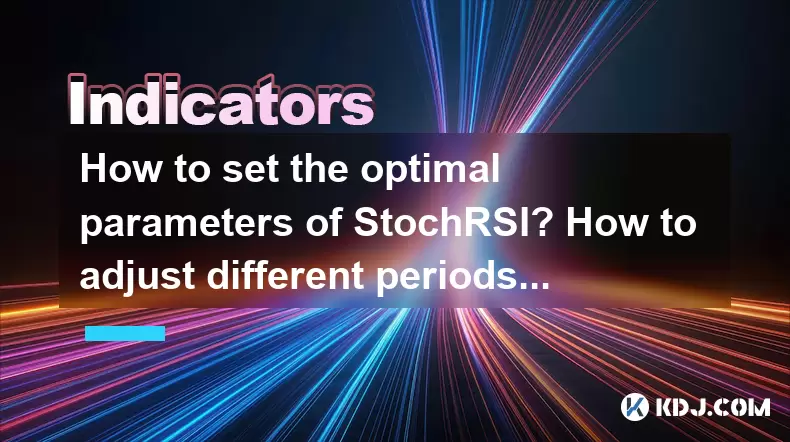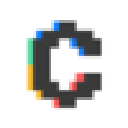-
 Bitcoin
Bitcoin $118200
0.49% -
 Ethereum
Ethereum $3580
0.33% -
 XRP
XRP $3.429
-0.49% -
 Tether USDt
Tether USDt $1.000
-0.05% -
 BNB
BNB $734.1
0.18% -
 Solana
Solana $177.7
0.26% -
 USDC
USDC $0.9999
-0.01% -
 Dogecoin
Dogecoin $0.2434
4.12% -
 TRON
TRON $0.3203
-1.58% -
 Cardano
Cardano $0.8334
1.59% -
 Hyperliquid
Hyperliquid $44.70
2.39% -
 Stellar
Stellar $0.4636
-1.10% -
 Sui
Sui $3.789
-0.43% -
 Chainlink
Chainlink $18.49
4.03% -
 Hedera
Hedera $0.2674
-0.08% -
 Avalanche
Avalanche $25.08
6.37% -
 Bitcoin Cash
Bitcoin Cash $520.4
1.12% -
 Shiba Inu
Shiba Inu $0.00001495
1.88% -
 Litecoin
Litecoin $112.5
9.34% -
 UNUS SED LEO
UNUS SED LEO $8.994
0.24% -
 Toncoin
Toncoin $3.209
-0.74% -
 Polkadot
Polkadot $4.393
2.95% -
 Uniswap
Uniswap $10.16
-0.07% -
 Monero
Monero $325.2
1.09% -
 Ethena USDe
Ethena USDe $1.001
0.00% -
 Bitget Token
Bitget Token $4.898
-1.03% -
 Pepe
Pepe $0.00001326
0.54% -
 Dai
Dai $1.000
0.02% -
 Aave
Aave $317.2
-0.43% -
 Cronos
Cronos $0.1214
0.07%
How to set the optimal parameters of StochRSI? How to adjust different periods?
StochRSI, combining Stochastic Oscillator and RSI, helps identify overbought/oversold conditions in crypto markets; adjusting periods optimizes its effectiveness.
May 22, 2025 at 08:42 pm

Understanding StochRSI and Its Importance
The Stochastic RSI (StochRSI) is a technical indicator that combines the concepts of the Stochastic Oscillator and the Relative Strength Index (RSI). It is used to identify potential overbought and oversold conditions in the market, which can help traders make more informed decisions. The StochRSI is particularly useful in the cryptocurrency market, where volatility can create numerous trading opportunities. Understanding the optimal parameters and adjusting different periods is crucial for maximizing the effectiveness of this indicator.
Basic Components of StochRSI
Before diving into the optimal parameters, it's important to understand the basic components of the StochRSI. The indicator calculates a value between 0 and 1, where values closer to 1 indicate overbought conditions and values closer to 0 indicate oversold conditions. The StochRSI is derived from the RSI, which itself is calculated over a specific period. The default period for RSI is typically 14, but this can be adjusted based on the trader's strategy and the asset's volatility.
Setting the Optimal Parameters for StochRSI
To set the optimal parameters for StochRSI, you need to consider several factors, including the asset's volatility, your trading timeframe, and your risk tolerance. The default settings for StochRSI are typically an RSI period of 14 and a StochRSI period of 14. However, these can be adjusted to better suit your trading needs.
- RSI Period: The RSI period determines how many periods are used to calculate the RSI. A shorter period, such as 5 or 10, will make the indicator more sensitive to price changes, while a longer period, such as 20 or 25, will make it less sensitive. For cryptocurrencies, which are often more volatile, a shorter RSI period might be more appropriate.
- StochRSI Period: The StochRSI period determines how many periods are used to calculate the StochRSI from the RSI values. Similar to the RSI period, a shorter StochRSI period will make the indicator more responsive, while a longer period will smooth out the signals. A common range for the StochRSI period is between 3 and 14.
Adjusting Different Periods for StochRSI
Adjusting the periods of the StochRSI can significantly impact its effectiveness. Here's how to adjust these periods:
For Short-term Trading: If you are a short-term trader looking to capitalize on quick price movements, you might want to use shorter periods. For example, setting the RSI period to 5 and the StochRSI period to 3 can provide more frequent signals. This setup is more sensitive to price changes and can help you enter and exit trades quickly.
For Long-term Trading: If you are a long-term trader focusing on broader market trends, longer periods might be more suitable. Setting the RSI period to 20 and the StochRSI period to 14 can provide smoother signals and help you avoid false positives. This setup is less sensitive to short-term fluctuations and can help you identify more significant trends.
For Highly Volatile Assets: Cryptocurrencies like Bitcoin and Ethereum can be highly volatile. For these assets, you might want to experiment with different combinations of periods to find what works best. A good starting point could be an RSI period of 10 and a StochRSI period of 7. This setup balances sensitivity and reliability, making it suitable for volatile markets.
Practical Steps to Adjust StochRSI Parameters
To adjust the StochRSI parameters in your trading platform, follow these steps:
- Open your trading platform and navigate to the indicators section.
- Select the StochRSI indicator from the list of available indicators.
- Adjust the RSI period by entering your desired value. For example, if you want to use a shorter period, you might enter 5.
- Adjust the StochRSI period by entering your desired value. For example, if you want to use a shorter period, you might enter 3.
- Apply the changes and observe how the indicator behaves on your chart.
Interpreting StochRSI Signals
Once you have set the optimal parameters for your StochRSI, it's important to understand how to interpret the signals it generates. Here are some key points to consider:
- Overbought and Oversold Levels: Traditionally, a StochRSI value above 0.8 is considered overbought, and a value below 0.2 is considered oversold. When the StochRSI reaches these levels, it might be a signal to sell or buy, respectively.
- Divergence: Look for divergence between the StochRSI and the price action. If the price is making new highs while the StochRSI is not, it could be a bearish signal. Conversely, if the price is making new lows while the StochRSI is not, it could be a bullish signal.
- Crossovers: Pay attention to crossovers of the StochRSI line with the overbought and oversold levels. A move from above 0.8 to below 0.8 could signal a potential sell, while a move from below 0.2 to above 0.2 could signal a potential buy.
Fine-Tuning Your StochRSI Strategy
Fine-tuning your StochRSI strategy involves continuously monitoring and adjusting your parameters based on market conditions and your trading performance. Here are some tips for fine-tuning:
- Backtesting: Use historical data to backtest different parameter combinations. This can help you identify which settings work best for your trading style and the specific cryptocurrency you are trading.
- Market Conditions: Be aware of the current market conditions. During periods of high volatility, you might need to adjust your parameters to be more sensitive, while during periods of low volatility, you might want to use less sensitive settings.
- Risk Management: Always consider your risk management strategy when adjusting your StochRSI parameters. More sensitive settings might generate more signals, but they can also increase the risk of false positives.
Frequently Asked Questions
Q: Can I use StochRSI as a standalone indicator for trading cryptocurrencies?
A: While StochRSI can be a powerful tool, it is generally recommended to use it in conjunction with other indicators and analysis methods. Combining StochRSI with tools like moving averages, volume indicators, and trend lines can provide a more comprehensive view of the market and help confirm signals.
Q: How often should I adjust the StochRSI parameters?
A: The frequency of adjusting StochRSI parameters depends on your trading strategy and the market conditions. For short-term traders, you might need to adjust parameters more frequently to adapt to rapid market changes. Long-term traders might adjust parameters less often, focusing on broader trends.
Q: Are there specific cryptocurrencies that work better with StochRSI?
A: StochRSI can be applied to any cryptocurrency, but it tends to work well with highly volatile assets like Bitcoin and Ethereum. These assets often provide clear overbought and oversold signals, making StochRSI a valuable tool for traders.
Q: How do I handle false signals from StochRSI?
A: False signals are a common challenge when using technical indicators like StochRSI. To mitigate this, use additional confirmation tools such as trend lines, support and resistance levels, and other indicators. Additionally, consider using a longer period for the StochRSI to reduce the frequency of false signals.
Disclaimer:info@kdj.com
The information provided is not trading advice. kdj.com does not assume any responsibility for any investments made based on the information provided in this article. Cryptocurrencies are highly volatile and it is highly recommended that you invest with caution after thorough research!
If you believe that the content used on this website infringes your copyright, please contact us immediately (info@kdj.com) and we will delete it promptly.
- Tinubu, the North, and Appointments: Too Little, Too Late?
- 2025-07-20 03:20:15
- Stellar Blade Hacked: When Crypto Scams Target Your Favorite Games
- 2025-07-20 03:50:12
- MoonBull, Doginme, and Meme Coins: What's the Buzz in 2025?
- 2025-07-20 03:50:12
- Dogecoin's Wild Ride: Price Forecast & the Utility Sector Buzz
- 2025-07-20 03:55:12
- Tinubu's Appointments: A Northern Perspective
- 2025-07-20 03:55:12
- Tinubu's Northern Appointments: A Cynical Ploy or Genuine Inclusion?
- 2025-07-20 04:00:12
Related knowledge

Advanced RSI strategies for crypto
Jul 13,2025 at 11:01am
Understanding the Basics of RSI in Cryptocurrency TradingThe Relative Strength Index (RSI) is a momentum oscillator used to measure the speed and chan...

Crypto RSI for day trading
Jul 12,2025 at 11:14am
Understanding RSI in the Context of Cryptocurrency TradingThe Relative Strength Index (RSI) is a momentum oscillator used to measure the speed and cha...

Crypto RSI for scalping
Jul 12,2025 at 11:00pm
Understanding RSI in the Context of Crypto TradingThe Relative Strength Index (RSI) is a momentum oscillator widely used by traders to measure the spe...

What does an RSI of 30 mean in crypto
Jul 15,2025 at 07:07pm
Understanding RSI in Cryptocurrency TradingRelative Strength Index (RSI) is a momentum oscillator widely used in cryptocurrency trading to measure the...

What does an RSI of 70 mean in crypto
Jul 13,2025 at 06:07pm
Understanding the RSI Indicator in Cryptocurrency TradingThe Relative Strength Index (RSI) is a widely used technical analysis tool that helps traders...

Does RSI work in a bear market for crypto
Jul 16,2025 at 01:36pm
Understanding RSI in Cryptocurrency TradingThe Relative Strength Index (RSI) is a momentum oscillator used by traders to measure the speed and change ...

Advanced RSI strategies for crypto
Jul 13,2025 at 11:01am
Understanding the Basics of RSI in Cryptocurrency TradingThe Relative Strength Index (RSI) is a momentum oscillator used to measure the speed and chan...

Crypto RSI for day trading
Jul 12,2025 at 11:14am
Understanding RSI in the Context of Cryptocurrency TradingThe Relative Strength Index (RSI) is a momentum oscillator used to measure the speed and cha...

Crypto RSI for scalping
Jul 12,2025 at 11:00pm
Understanding RSI in the Context of Crypto TradingThe Relative Strength Index (RSI) is a momentum oscillator widely used by traders to measure the spe...

What does an RSI of 30 mean in crypto
Jul 15,2025 at 07:07pm
Understanding RSI in Cryptocurrency TradingRelative Strength Index (RSI) is a momentum oscillator widely used in cryptocurrency trading to measure the...

What does an RSI of 70 mean in crypto
Jul 13,2025 at 06:07pm
Understanding the RSI Indicator in Cryptocurrency TradingThe Relative Strength Index (RSI) is a widely used technical analysis tool that helps traders...

Does RSI work in a bear market for crypto
Jul 16,2025 at 01:36pm
Understanding RSI in Cryptocurrency TradingThe Relative Strength Index (RSI) is a momentum oscillator used by traders to measure the speed and change ...
See all articles

























































































